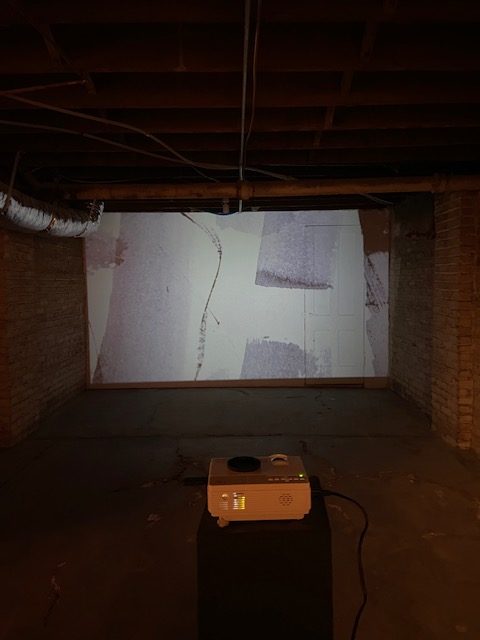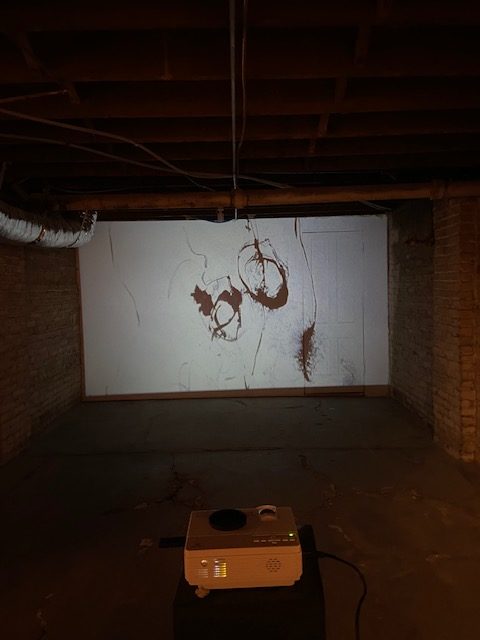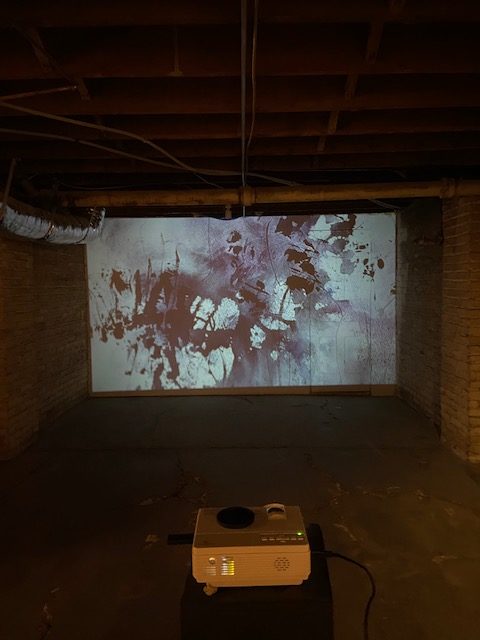THE SEED WOMAN is Joan Malkerson’s latest amazing installation
She explains its motivation and creation in this video.
To read more about The Seed Woman please visit the dedicated web page:
The Seed Woman.
NORMA: DECEPTION AND REDEMPTION IN THE RED DOOR GALLERY
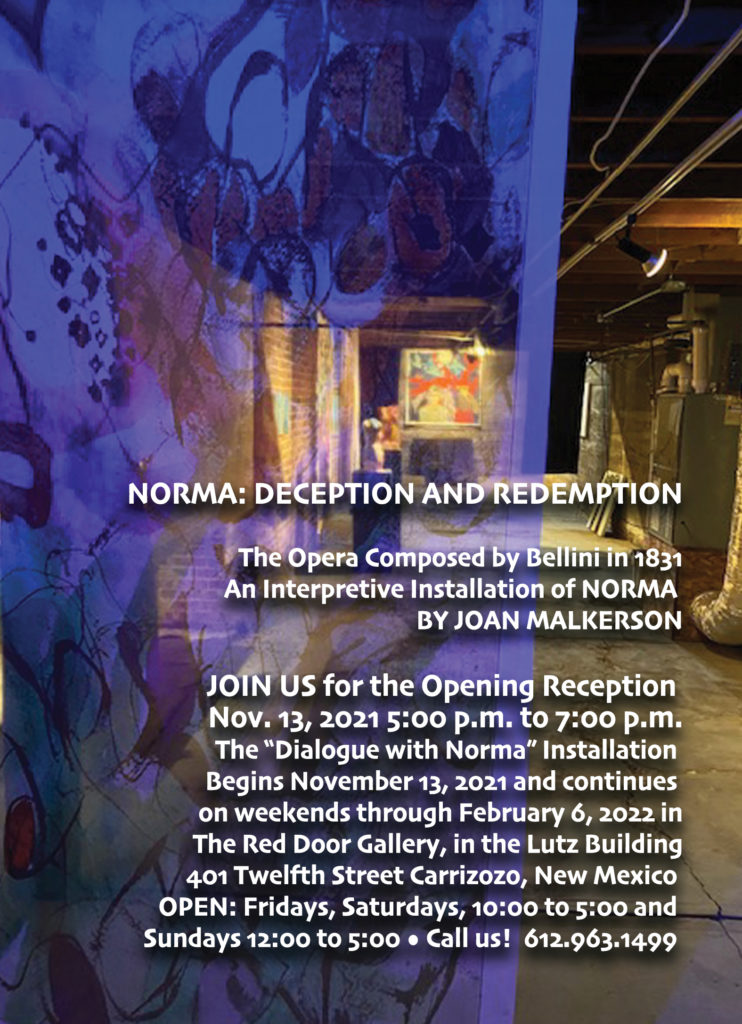
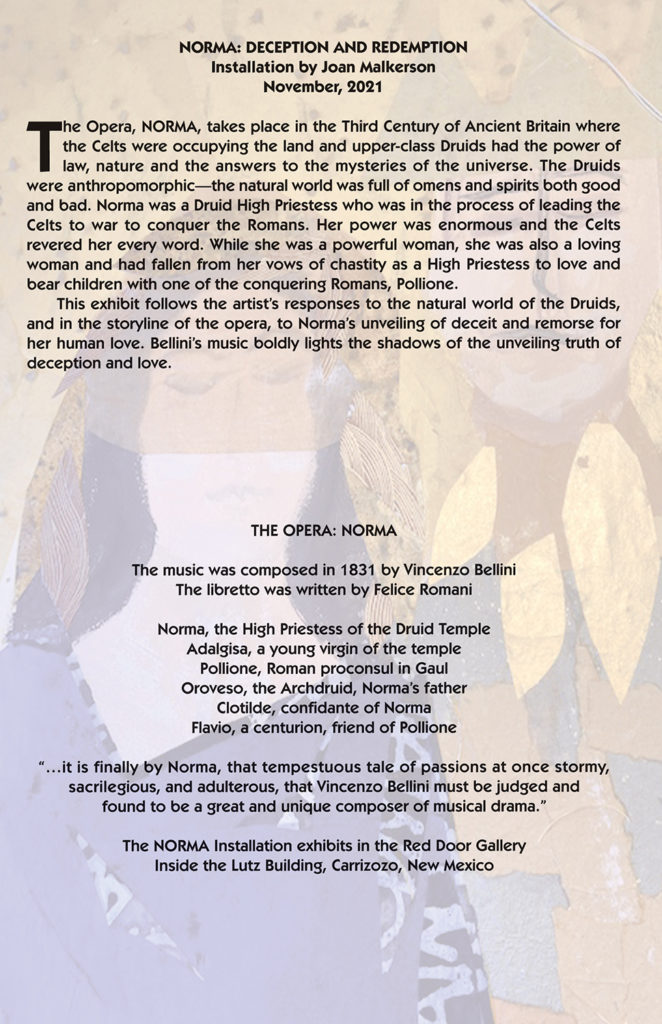
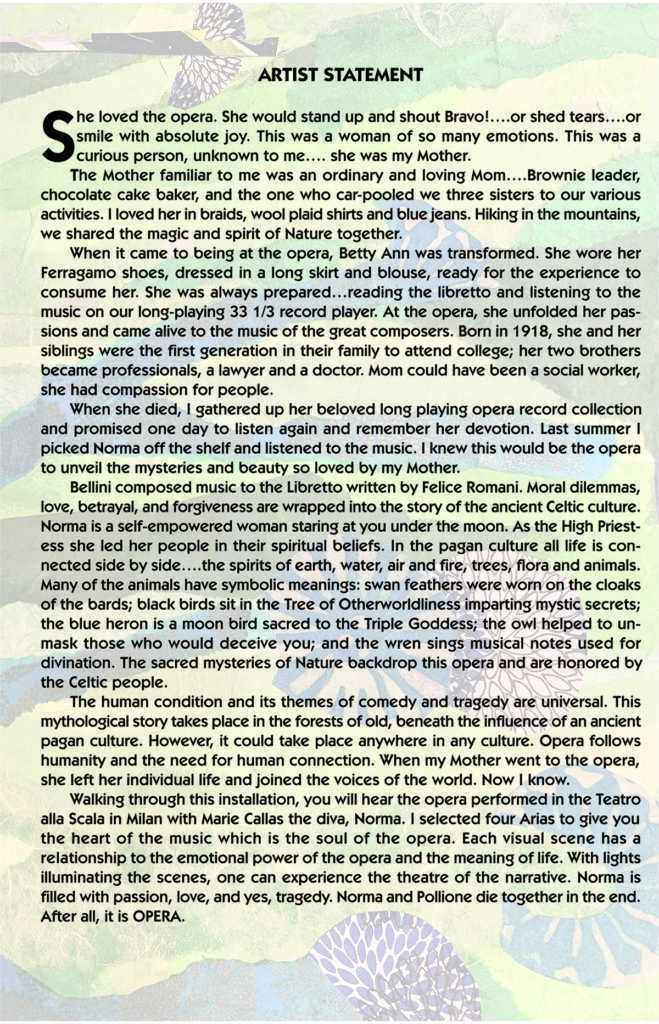
Watch this beautiful video by Corey Walker about the Installation Norma
Here is an interview with Joan about the Installation, by Corey Walker
During the Norma Installation, forty light projection drawings responding to the music lit up a twenty by ten foot wall.
The Stone Catcher by Joan Malkerson
Inspired by “Just Mercy” by Brian Stevenson

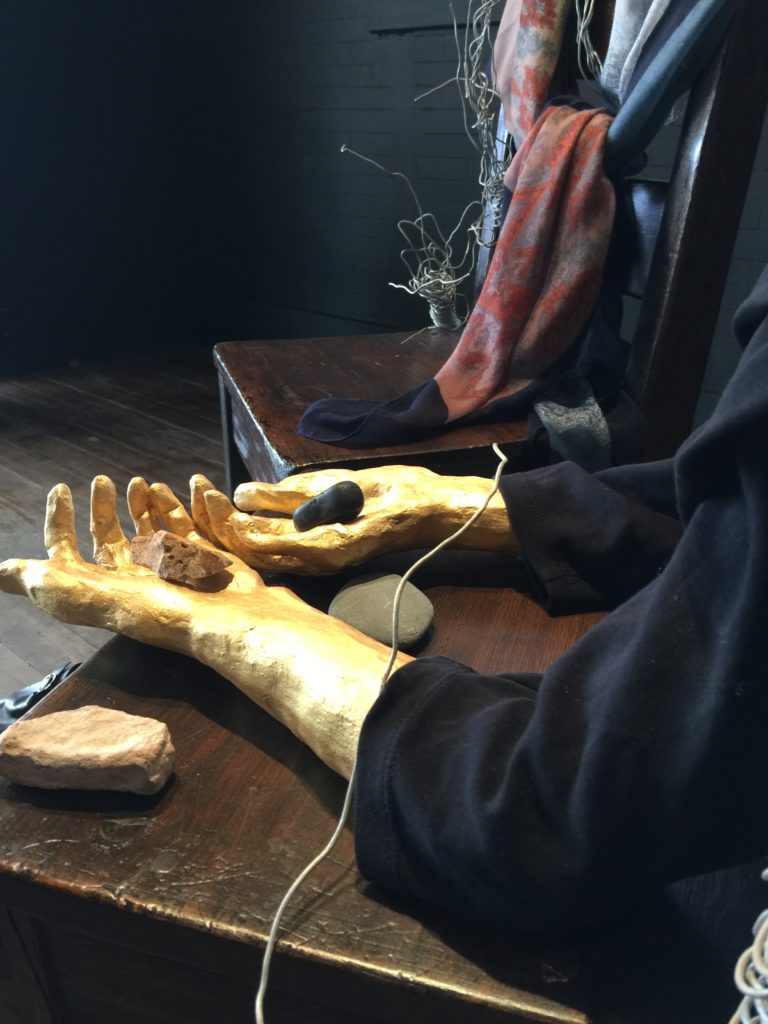
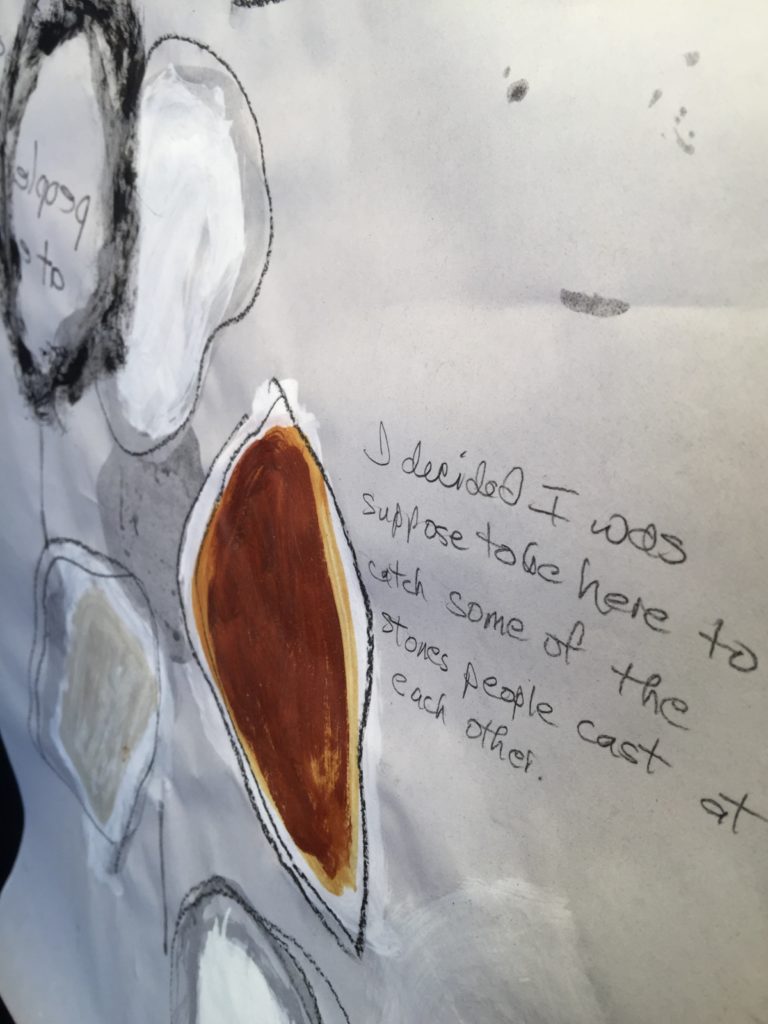
My life long love of stones continues in this installation which speaks to the power of stones as a metaphor. The stones collected by the Stone Catcher are symbols of pain, injustice, sorrow and grief. The black woman in the Alabama courtroom does not have a name, but her grand son was murdered by two young boys. She grieved and cried for the loss of her beloved grandson. Another woman sat by her side, they never talked, but she knew that woman understood and felt compassion for her sorrow. When the trial was over, the two boys were sentenced to life in prison. That moment is when the grandmother understood her mission. She empathized with the grief of the parents and family of those boys. So, she decided to sit in the courtroom with grieving families or friends of the victims and the perpetrators. She catches the pain of sorrow and injustice, she catches the stones.
I hope more of us can understand, have compassion and empathize.
Be a stone catcher.
Catcher in the Rye by Joan Malkerson
inspired by the famous J.D. Salinger nov
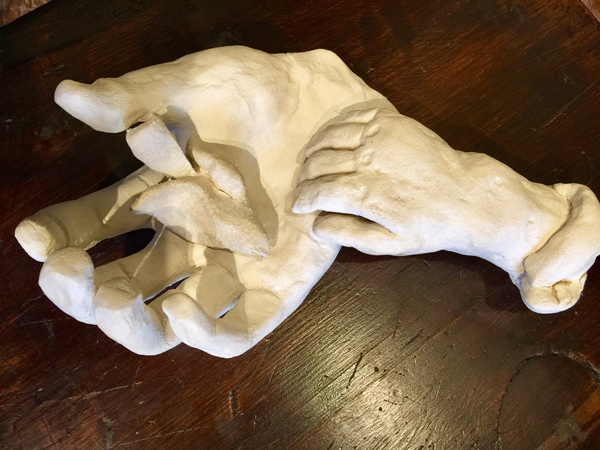
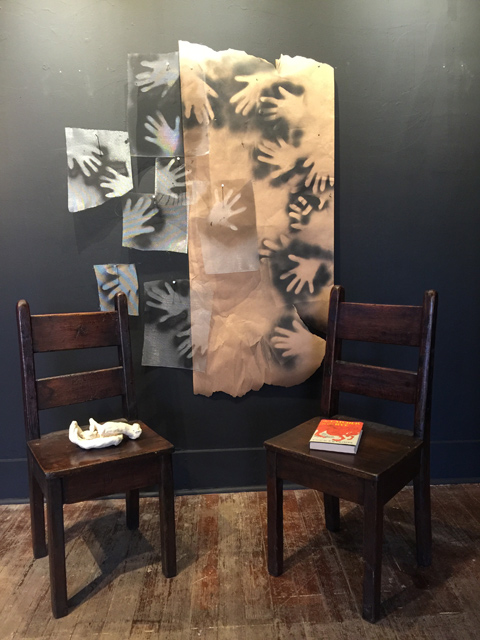
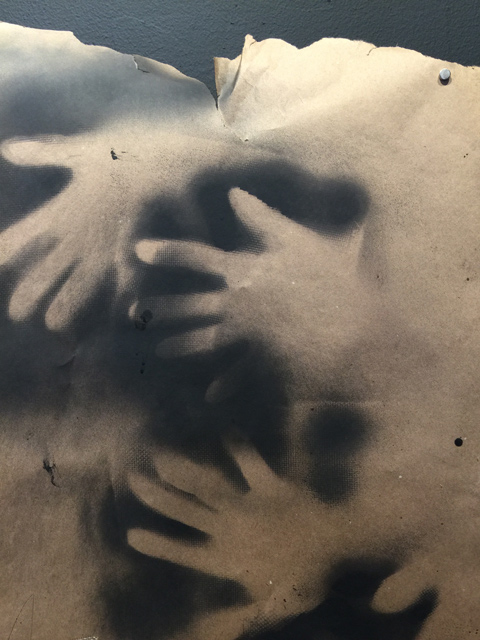
“….I’m standing on the edge of some crazy cliff. What I have to, I have to catch everybody if they start to go over the cliff_____I mean if they’re running and they don’t look where they’re going. I have to come out from somewhere and catch them. That’s all I’d do all day. I’d just be the catcher in the rye and all.” Chapter 22. .. Holden Caulfield lost his little brother at a very young age. He felt a terrible sense of grief and loss. Grief does strange things to people, especially a young teen-ager who does not want to mature and see the real world full of disappointments and sadness. Each of us in our own way understands and feels this loss of innocence. J.D. Salinger’s book has been translated into other languages all over the world.
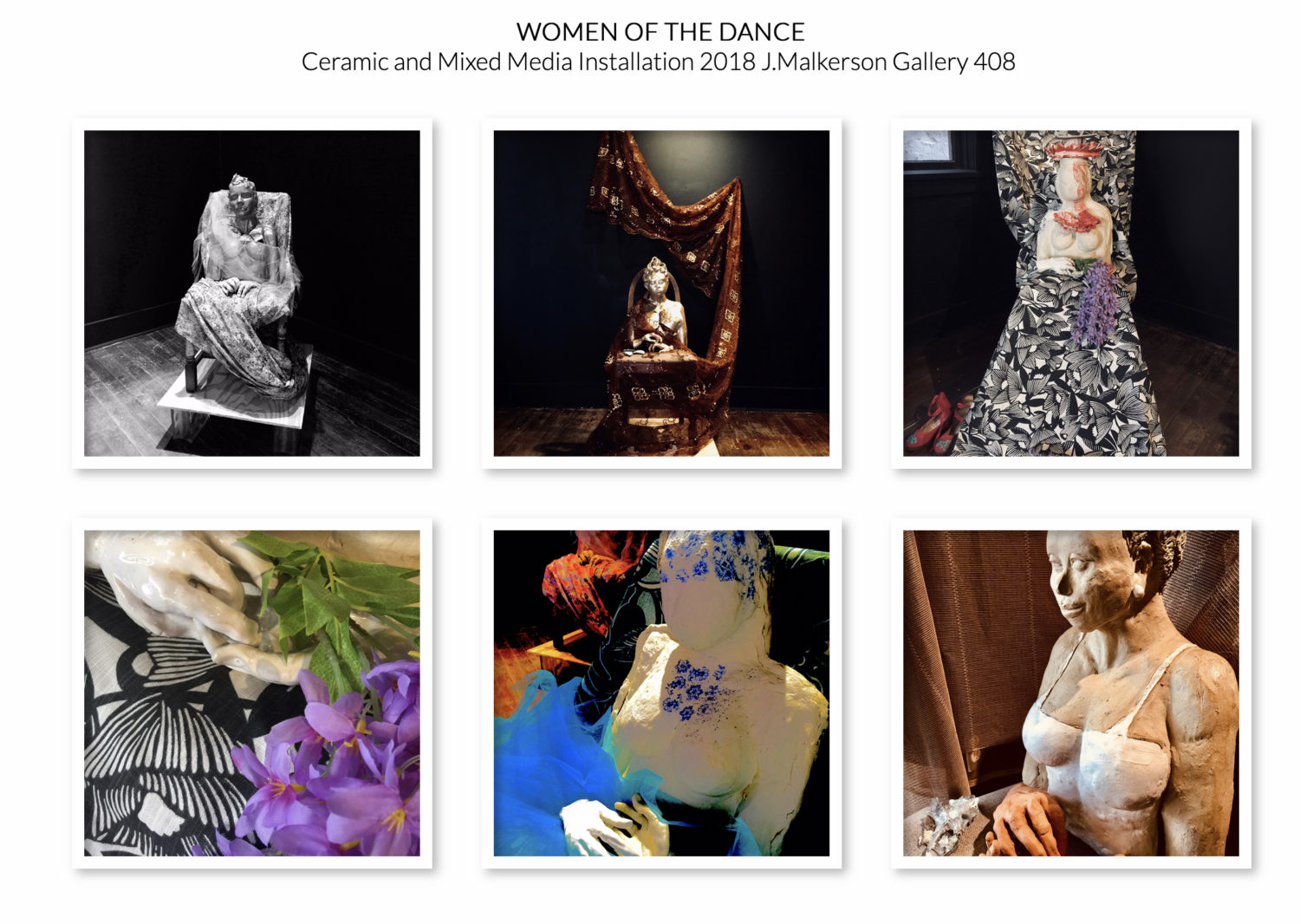 INSTALLATION BY JOAN MALKERSON
INSTALLATION BY JOAN MALKERSON
From top left to right, then bottom left to right:
Caroline Sophie Marie Weigmann, Lanchie Stevenson, Yuanyuan Tan
Yuanyuan Tan’s Hands, The Blue Tutu, Beryl McBernie.
Why do we remember certain events and situations in our experiences throughout life? Neuro-scientists tells us it is complicated. Repetition, emotions, even smell and taste can trigger memories. These Sculptures connect to my own personal history, a love for the dance that grew from my ballet lessons as a small child with Lilian Cavillo. We all dance. While making a cake, my mother would dance to Louis Armstrong. The joy of dancing starts early by just listening to music and moving to the rhythm.
Each of these sculptures has a larger history, but here in this space, they are dancers, waiting in the wings of their performance stage. Their hands in different postures gesture the waiting; some shoes placed to imply feet, some shoes set aside about to be put on, and bare feet with no shoes at all. The chosen fabric reveals something about the dancer, interpreting how the dancer might dance, or sit down, or the mood of the dancer. Old chairs stand on platforms, like in the backstage theaters where they might perform.
Individuals, different styles, intentions, cultural backgrounds. Consider these five women of the dance in one place? What kind of performance ensues? What is the music? What indeed is the dance? Individually each a dancer capable of magic, collectively respectfully admiring to one another. The whole world dances!
Curiously, these sculptures became real dancers from various backgrounds and times. Researching famous dancers, these women stood out as creative and inspiring leaders.
Caroline Sophie Marie Weigmann is first. She was a German dancer, choreographer and notable pioneer of the expressionist dance and dance therapy. With bare feet she brought the deepest existential experiences to the stage. She was an iconic figure in the history of Modern Dance.
Lanchie Stevenson was asked by Arthur Mitchell to be one of the found members of the Dance Theatre of Harlem as the principle dancer. She grew up in New York City and was Determined to follow her passion as a dancer. Persevering as a woman of color, she initiated the reality of African Americans in the ballet, and even requested skin-tone black tights, leotards and black toe shoes. She tells her story today as a woman of the Islamic faith.
Yuanyuan Tan is a Chinese Prima Ballerina in the San Francisco Ballet, the oldest Ballet Company in the United States. She was born in Shanghai China and learned to dance in pre-school. She is a notable international icon of fame and fashion. One of her favorite performances is Swan Lake. She is known for Diving into Lilacs, her own original ballet.
The Blue Tutu by Edgar Degas sits on the right. Degas liked to paint the ballerinas sitting backstage putting on their toe shoes and anticipation the dance.
Beryl McBernie is a dancer from Trinidad. She established the Little Carib Theatre which promoted the indigenous dances of Trinidad and Tobago. She decided in her teens to promote “the emotions of the folk, which gave in insight into the life and emotions of ordinary people.” She recently died on March 30, 2000 after being given the heist national award in Trinidad and Tobago for the promotion of the arts.
Back to Top hit “Link” button below.


